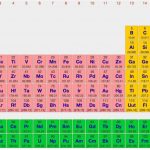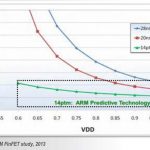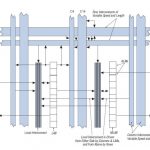The nice thing about webinars is that if you register for the live one and you can’t attend you will still get first notice when the replay goes up. The other nice thing is that you can read a blog review of a webinar or whitepaper on SemiWiki first to see if it is worth your time. If you do attend a webinar you can also post a review of… Read More
Electronic Design Automation
Power and Thermal Analysis of Data Center and Server ICs
The server market is a diverse, yet standardized market. The ICs and components designed and manufactured in final assemblies must meet form factor requirements for rack mount and blades. The form factor enclosures and the component placement dictate the thermal-mechanical properties and hence the thermal cooling limits … Read More
TCAD to SPICE Simulation of Power Devices
The periodic table shows that Silicon (Si) is in a column along with other elements like Carbon (C) and Germanium (Ge). With so much emphasis on Silicon, you’d think that the other semiconductor materials have been neglected a bit.
Silicon is a wonderful material and most of our consumer electronics and handheld devices … Read More
Webinar: Collaboration Within Dispersed Design Teams
In the face of shrinking time-to-market windows, semiconductor companies are aggressively vying with each other to emerge with new or variants of existing ICs and SoCs to gain market share. The growth of the mobile market –wireless, networking, storage, and computing – as well as new areas such as the Internet of things (IoT) and… Read More
Assertion Synthesis: From Startup to Mainstream
In college many of us dreamed of starting up our own company by offering something new that has never been done before. Today I spoke by phone with Yunshan Zhuin Shanghai, and he has actually lived out this scenario by founding NextOp in 2006, then getting that company acquired by Atrentain 2012. The new capability that NextOp created… Read More
FinFET Design for Power, Noise and Reliability
IC designers have been running analysis tools for power, noise and reliability for many years now, so what is new when you start using FinFET transistors instead of planar transistors? Calvin Chow from ANSYS (Apache Design) presented on this topic earlier in the summer through a 33 minutewebinar that has been archived. There is… Read More
Transistor-level Sizing Optimization
RTL designers know that their code gets transformed into gates and cells by using a logic synthesis tool, however these gates and cells are further comprised of transistors and sometimes you really need to optimize the transistor sizing to reach power, performance and area goals. I’ve done transistor-level IC design before,… Read More
Improving Complex System Design
Next week Mike Jensen of Mentor will present a webinar Improving Complex System Design Reliability and Robustness. The webinar will be presented live twice and presumably available for replay soon after, as is usually the case:
- September 4th 6.00-6.45am pacific (9pm in Asia, 3pm in most of Europe)
- September 4th 10.00-10.45am
Silicon Measurement Data Gives Insights to Using Metal Fill With Inductors
Metal fill requirements for inductors are now a fact of life. Fill has long been seen as detrimental to device performance due to parasitic capacitance. The necessity of fill arises from the need to ensure planarization of dielectric layers by using chemical mechanical polishing. Without adequate fill, areas of the chip can suffer… Read More
Do you check your circuit DC stability?
Most analog designers are aware of loops stability. In most cases, stability is understood as AC stability, the goal is ensuring enough phase (gain) margin so as to avoid the loop to enter oscillation. But prior to studying AC stability, DC stability should be questioned. What is that DC stability only few people think of?… Read More






Quantum Computing Technologies and Challenges